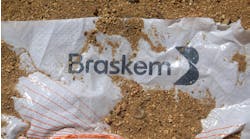Process Puzzler: Do Cranky Centrifuges Deserve Another Turn?
This Month’s Puzzler
Our constant-speed continuous decanter centrifuges (see the figure) aren’t doing a good job in separating corn starch from water. In truth, these units never have worked well but we could get by because our process has some redundancy. Now, due to a six-sigma initiative, I’ve been asked to optimize centrifuge operations. My investigation has found a variety of problems, including: variations in feed-stream concentration — the flow rate changes only slightly; bearing failure because crystals get past the shaft seals — we added a hot-water/steam flush of the scroll to eliminate this problem but we now get scroll vibration; some corrosion attack is starting at welds where the stainless steel has gone to rust — this mainly appears on the outside of the feed tube but we also see attacks in the screen and, now, even the scroll; seal failure has become a monthly affair because of shaft corrosion; a likely increase in the risk of fire from solid buildup behind the seals; and surging at the solids discharge lip and swamping at the water discharge.
Maintenance is pushing to replace the centrifuges because they cost $2.2 million/year to maintain. Projects says swapping them with new dual-drive or hydraulically driven centrifuges to handle the variations in solids loading and flowrate would eliminate this cost. However, an electrician brought in to assess the over-taxing of the electrical system warns these new drives would affect the starting and stopping loads on our grid. Operations prefers the existing setup because of its familiarity.
What do you think? Are these units worth saving? Is there anything else we should consider?
Talk To The Vendor
I am appalled that the company has lived for some time with the problems. It seems no one is responsible. A two-prong approach might be necessary: 1) learn to master the existing centrifuge; and 2) consider a new centrifuge.
Existing centrifuge. It is a brave admission that these centrifuges never worked well. The very first thing I would do is contact the centrifuge manufacturer, discuss all the outlined issues and seek its advice. This is the least expensive solution. You company might learn about the current centrifuge and its workings.
The process seems to be out of control as suggested by variations in solid concentration in the feed stream. This is confirmed by finer particles getting past the shaft seal. They need to be controlled. I would attempt to increase the residence time in the feed vessel to see if larger crystal size will reduce or eliminate finer particles getting to the seal shaft. Washing the solids in the seal suggests that the process requires more residence time for the crystals to grow.
Some corrosion attack suggests there is high chloride concentration. We experienced similar corrosion and had to go to low-carbon stainless steel for all wetted parts. Consider using different welding material. It might be helpful to ask the equipment vendor.
New centrifuge. I would explore alternative centrifuges. $2.2 million per year maintenance is lot of money. Downtime wastes additional money.
The company might need to re-evaluate its operations to determine if it has qualified staffing. It should consider staffing as part of its six-sigma efforts.
Girish Malhotra, president
EPCOT International, Pepper Pike, Ohio
Focus On The Impending Emergency
The truth is that a “sword of Damocles’ is hanging over plant operations — imminent bearing failure; corrosion of shaft, feed tube and scroll; and poor quality— and you must address it first.
Your engineering staff should be working on two separate plans: 1) what to do to make up the lost production when a catastrophic failure occurs; and 2) whether you can get a decanter with built-in balancing of your electrical load. I remember a familiar German manufacturer sold centrifuges with this feature.
The catastrophic failure plan can be putting away enough inventory — I’d say a week’s worth — to allow a stopgap repair plan. You might consider removing the shaft and feed tube and grinding away the corroded steel then welding it. Forget about low bid. Any shop with a lick of sense will do this for time and materials with a not-to-exceed cap. I think the manufacturer will have some input into your plans. A spinning shaft must be tested for shear stress (torque) before it’s safe to use. So, you should plan on a visit from the manufacturer’s representative and involve that person in your planning. As part of the stopgap repairs, consider a chemical treatment of the corroded parts, cladding or even replacement with a superior steel. Remember that austenitic steels are hardened during working not heat treatment. It is important to tailor treatment or replacement with the hardness needed for such things as a rotating shaft subject to shear — this is where the equipment manufacturer comes in. Also, keep in mind there’s always a risk that the machinery can’t be repaired.
One advantage of this stopgap approach is that it gives you a chance to test some of your solutions.
The other task is improving the centrifuge reliability, which dovetails nicely with enhancing product quality. Here’re a few suggestions to attempt first: 1) take several samples of the steam, the condensate, and then the product and any water used in your process — I want to say that chlorine attack is possible but I’ve seen non-chloride salts do as much damage in high concentration — and examine the metallurgy of the corroded parts, including via dye penetration testing; 2) look at the centrifuge startup and shutdown procedures — these are often ignored in root-cause analysis — because the problem might begin during these critical transitions; and, 3) improve the performance of the upstream feed tank — although residence time may be a consideration, measurements are required first, so look at process control in this tank.
While the quality engineer has a point, the company is still able to blend away off-product. This is where your customer service staff comes in: they need to evaluate whether the blending is noticed and provide feedback.
Now, let’s consider how much money you’ve got to spend, and a conceptual process design (FEL-0) assessment. Assuming a 20% payback, ignoring downtime since you’re assuming you need to replace the centrifuges to stay in business, you’re looking at about $10 million.
As for the electrical loading problem, it sounds like a great opportunity to do what many companies should do routinely: map out current draw throughout the plant. If you don’t, sooner or later you’ll have a spectacular fire. I’ve seen it before, two or three times in a 40-year career. It usually takes out something vital, like a motor control center, even one that seemed perfectly fine two weeks before.
Dirk Willard, consultant
Wooster, Ohio
April’s Puzzler
Steam was used to sterilize and then pressure test a new 12-ft-dia. storage tank for our reactor train. Unfortunately, the tank shell ruptured. It was rated for 45 psig, not vacuum. It didn’t have a U stamp; our project engineering group decided not to spend the $3,500 required. The old tank is in the bone yard. There isn’t anything wrong with it, except that is about 25% too small and was de-rated to 20 psig; in fact, its R stamp is current and it’s rated for full vacuum.
There were a few things I observed after investigating for a day: 1) maintenance staff conducted the work because the people in operations were tied up in re-training during the downtime (the week between Christmas and New Year’s); the instrument tech and the youngest mechanic on our crew admitted they’d never done this type of work before; 2) the project engineer was busy on other projects while the superintendent was away on vacation and out of touch; 3) the top manway cover that was supposed to be closed during the pressure test but open during the steam sterilization was bolted tightly (sterilization follows pressure testing); 4) a ½-in. flange on a gasketed vent line was loosened to act as a vent during sterilization — the crew was given this advice over the phone by a production foreman taking a break from skiing; and 5) a fire hose was used to fill the tank for the pressure test, which seems extreme to me.
What can we do to avoid this problem in the future? What can be done now to get us up and operating?
Send us your comments, suggestions or solutions for this question by March 13, 2020. We’ll include as many of them as possible in the April 2020 issue and all on ChemicalProcessing.com. Send visuals — a sketch is fine. E-mail us at [email protected] or mail to Process Puzzler, Chemical Processing, 1501 E. Woodfield Rd., Suite 400N, Schaumburg, IL 60173. Fax: (630) 467-1120. Please include your name, title, location and company affiliation in the response.
And, of course, if you have a process problem you’d like to pose to our readers, send it along and we’ll be pleased to consider it for publication.


